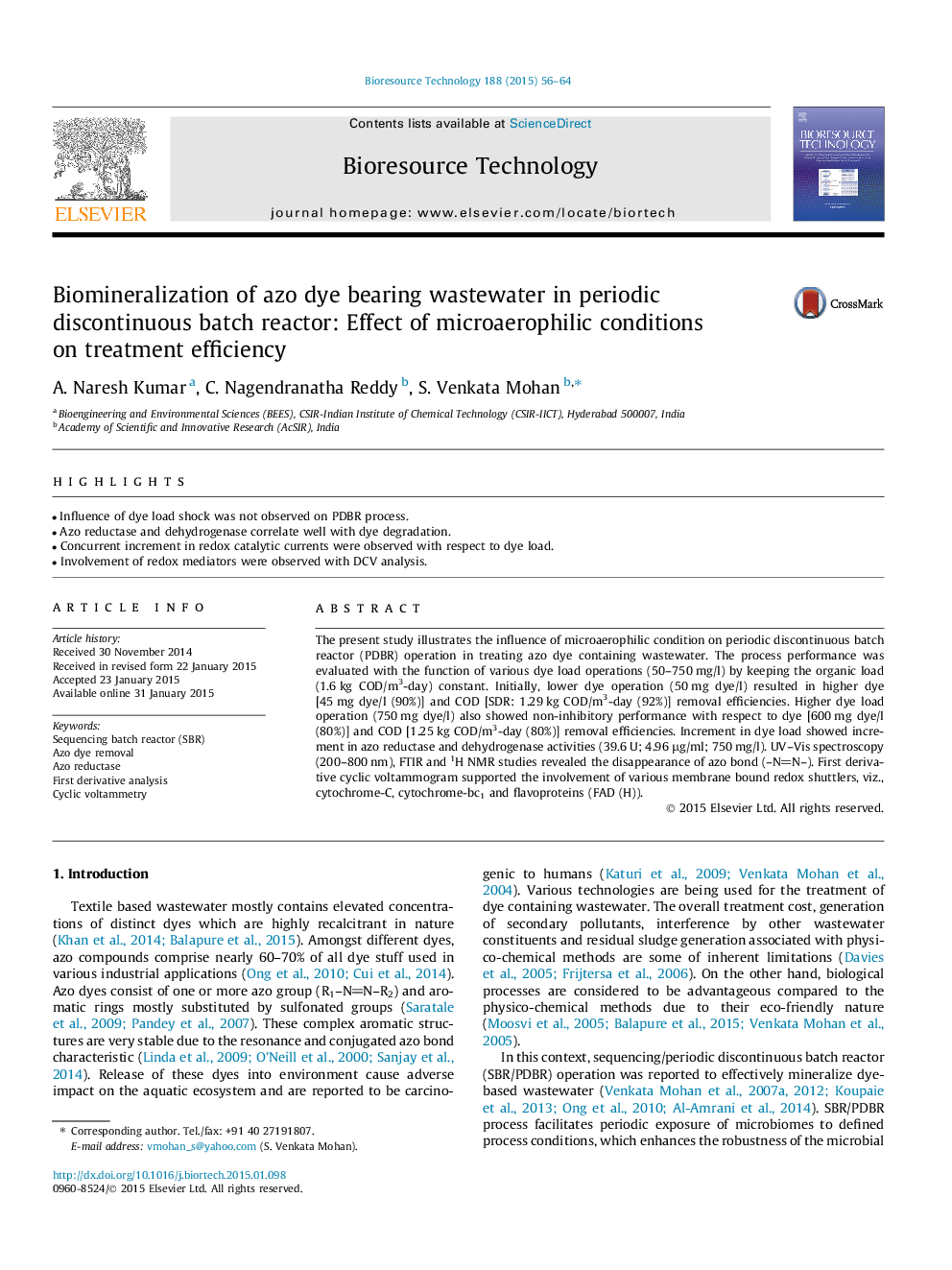| Article ID | Journal | Published Year | Pages | File Type |
|---|---|---|---|---|
| 679701 | Bioresource Technology | 2015 | 9 Pages |
•Influence of dye load shock was not observed on PDBR process.•Azo reductase and dehydrogenase correlate well with dye degradation.•Concurrent increment in redox catalytic currents were observed with respect to dye load.•Involvement of redox mediators were observed with DCV analysis.
The present study illustrates the influence of microaerophilic condition on periodic discontinuous batch reactor (PDBR) operation in treating azo dye containing wastewater. The process performance was evaluated with the function of various dye load operations (50–750 mg/l) by keeping the organic load (1.6 kg COD/m3-day) constant. Initially, lower dye operation (50 mg dye/l) resulted in higher dye [45 mg dye/l (90%)] and COD [SDR: 1.29 kg COD/m3-day (92%)] removal efficiencies. Higher dye load operation (750 mg dye/l) also showed non-inhibitory performance with respect to dye [600 mg dye/l (80%)] and COD [1.25 kg COD/m3-day (80%)] removal efficiencies. Increment in dye load showed increment in azo reductase and dehydrogenase activities (39.6 U; 4.96 μg/ml; 750 mg/l). UV–Vis spectroscopy (200–800 nm), FTIR and 1H NMR studies revealed the disappearance of azo bond (–NN–). First derivative cyclic voltammogram supported the involvement of various membrane bound redox shuttlers, viz., cytochrome-C, cytochrome-bc1 and flavoproteins (FAD (H)).
